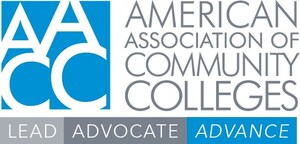New Study Reveals Dramatic 20-Year Growth In Certificates, Degrees Awarded By Community Colleges
Minority Students Show Triple-Digit Increases in Credentials Earned
WASHINGTON, Oct. 5, 2011 /PRNewswire-USNewswire/ -- Attainment of credentials -- certificates and degrees -- at community colleges has seen triple-digit increases over the last two decades, especially among minority students, and far outpaces growth in enrollment, according to new policy brief released this week by the American Association of Community Colleges (AACC).
For the first time, the study disaggregates data related to credential attainment at community colleges and in so doing paints a more positive assessment of student success, revealing a 127% increase in total credentials earned at community colleges between 1989-90 and 2009-2010. In 2009-2010 alone, community college students earned more than 1 million credentials.
One of the most compelling findings of The Road Ahead: A Look at Trends in the Educational Attainment of Community College Students is the growing importance of 1- and 2-year certificates, a presumed response to market demand for greater flexibility and shorter training intervals.
The AACC study cites previous research that indicates by 2018, the United States will need to fill 46.8 million jobs. Of those, 30 million will require some form of postsecondary education, and, at current levels of production, the supply of workers with postsecondary credentials will fall short by 7.7 million. As the demographics of the nation's population change, increased educational attainment among all ethnic and racial groups is necessary to meet the demands of the future workforce.
Among the largest increases in earned credentials the AACC study notes are a 440% increase among Hispanic students and a 283% increase among Black students. Triple-digit increases also exist for Asian/Pacific Islander students and American Indian/Alaska Native students. Credential attainment among White students increased 90% in that same time frame.
Despite large increases in credential attainment for non-White populations, the brief acknowledges historical gaps in attainment still need to be addressed.
The reasons for the dramatic increases aren't easily identifiable, AACC analysts say, though the persistent U.S. economic recession did spark double-digit enrollment increases at community colleges in recent years.
Community college students also are transferring to 4-year institutions at a higher rate than has been previously reported. The Integrated Postsecondary Education Data System (IPEDS) indicated that 15.7% of students in a 2003 cohort transferred to another institution within 3 years of beginning at a community college. However, a study by the National Center for Education Statistics reported that number was at nearly 30%, and it increased to 50% after 6 years.
Difficulty in verifying transfers and in accessing student-level data contribute to the data discrepancy, as well as the fact that community colleges are unable to count transfers if the student earned a credential before transferring for IPEDS reporting.
Perhaps one of the biggest considerations when looking at transfer and completion rates, though, is time. Because 84% of community college students work at least part time and many have children or family responsibilities, the time it takes to meet their educational objectives is lengthened, and their success often cannot be accurately gauged in typical 3-year studies.
The need to increase completion rates has spurred several recent initiatives at community colleges. Colleges are streamlining student choices, altering developmental education instruction, and collaborating among themselves to share knowledge and best practices. They also are relying on data to make informed decisions.
In response to challenges from the Obama administration and leading philanthropists, AACC and other community college-focused organizations committed, in 2010, to take action to increase by 50% the number of certificates and degrees awarded by community colleges by 2020.
The full policy brief is available at www.aacc.nche.edu. The brief was funded in part by Lumina Foundation for Education (www.luminafoundation.org).
Headquartered in Washington, D.C., the American Association of Community Colleges is the leading advocacy organization representing close to 1,200 community, junior and technical colleges nationwide. Community colleges are the largest sector of higher education, enrolling 13.4 million credit and non-credit students each year. To learn more about the AACC, visit www.aacc.nche.edu
Lumina Foundation, an Indianapolis-based private foundation, is committed to enrolling and graduating more students from college—especially 21st century students: low-income students, students of color, first-generation students and adult learners. Lumina's goal is to increase the proportion of Americans who hold high-quality degrees and credentials to 60 percent by 2025. Lumina pursues this goal in three ways: by identifying and supporting effective practice, through public policy advocacy, and by using our communications and convening power to build public will for change.
SOURCE American Association of Community Colleges
WANT YOUR COMPANY'S NEWS FEATURED ON PRNEWSWIRE.COM?
Newsrooms &
Influencers
Digital Media
Outlets
Journalists
Opted In





Share this article